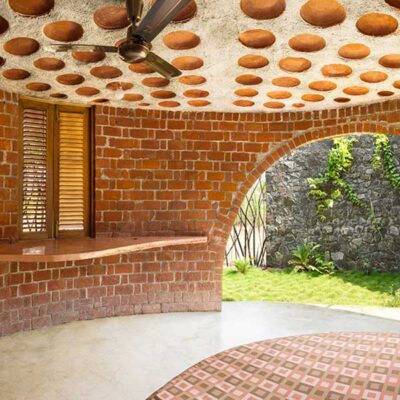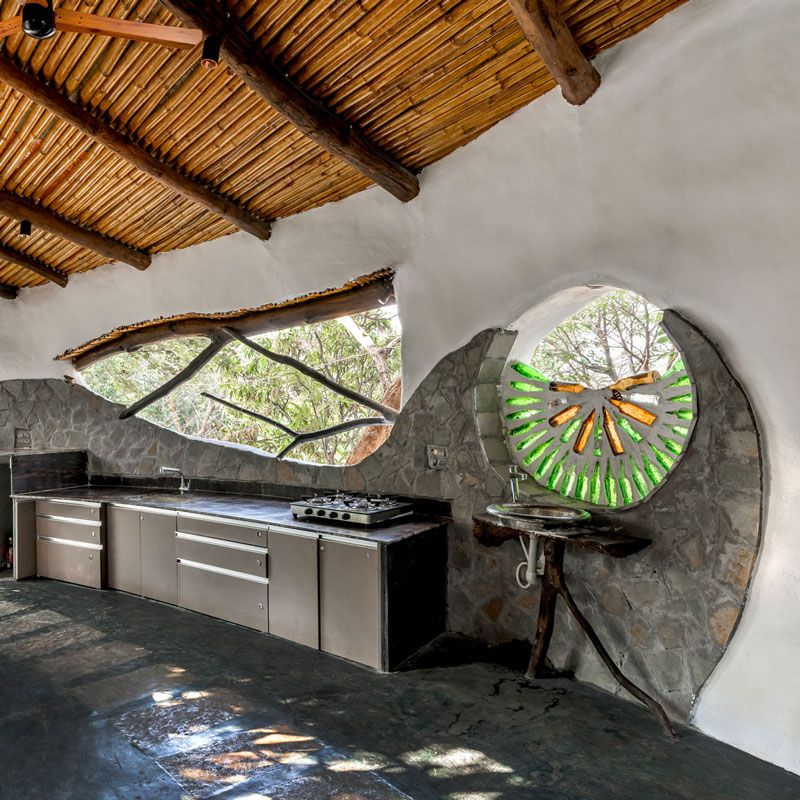Rammed earth
Table of Contents
ToggleIntroduction
In the world of sustainable architecture, rammed earth stands out as an ancient yet increasingly popular building technique. Known for its environmental benefits, durability, and unique aesthetic, rammed earth construction is gaining traction among architects, builders, and homeowners who prioritise eco-friendly building practices. In this blog post, we’ll delve into what rammed earth is, its benefits, and why it’s a compelling choice for modern sustainable architecture.
What is rammed earth?
Rammed earth is a construction technique that involves compacting a mixture of earth, sand, gravel, clay, and sometimes stabilisers like cement or lime, into a solid, load-bearing wall. This method has been used for thousands of years in various cultures around the world, and it remains a viable and attractive option for modern construction.

The detailed process of rammed earth construction
1. Material selection
The earth used in rammed earth construction is typically sourced from the building site or nearby, reducing transportation costs and environmental impact.
2. Formwork Setup
Erect sturdy wooden or metal formwork to shape the wall. Ensure it is well-supported to withstand the ramming process. Use good quality marine play or steel shuttering.


3. Material Preparation
Mix cement sand and soil to create a damp mixture. The ratio depends upon the quality of soil and clay content in it. Approximate clay content is 40% and cement is 8-10%

Keep adding lime water gradually in smaller amount. Adding lime improves strength and ensures early curing.

4. Mixing
Mix well to create a cohesive mixture. Alternatives for sand can be m-sand or grit. Stones and aggregates can be part of the mixture. Mix until you get a uniform-coloured damp mixture. Ensure that there are no lumps. The mixture should be such that it should break with a splat on the floor when a mud ball is dropped from a height.


5. Marking
On a rod, mark the depth of a single layer of earth approx. 125mm. This is to check the level as we pour the mixture in the framework. A layer of 125 mm gets compressed up to 70 mm approximately after ramming.

6. Layering
To start with, pour a thin layer of cement slurry as a base layer in the framework. Such a layer of slurry will be poured after each set of the earth mixture. Rub the edges with the polish paper to avoid imprints on the wall.

Start pouring the earth mixture in framework in layers. Check the level with the rod marking done earlier. Continue pouring the earth till the thickness of the earth is achieved.



7. Ramming
Start with the ramming perpendicularly. Initially stamp with a low pressure to equalise the layer with a hand tamper (a tool with a heavy metal plate attached to a handle). The plate needs to be totally flat. Increase the pressure gradually. You will notice the ramming sound as the earth gets tightly bonded. The ramming needs to be done properly till you get a metal like sound from it.


Note – This is manual ramming. Pneumatic tamper is an alternate option for this process ensuring even pressure mostly used for large scale projects.
Ensure each layer is uniformly compacted to avoid weak spots and achieve a consistent appearance. Repeat the process for all the layers till the brim of the framework setup. Leave it overnight to set naturally. Curing starts the next day. It takes 21 days to cure fully.
8. Formwork removal
Remove the side framework, next day. Check the set wall, The binding between the layers will indicate whether the ramming is done properly.


9. Next set
Fix up another set of frame work to repeat the process for setting the wall above. Cross check the angles with a plumb bob.


Repeat the procedure of pouring the earth and ramming. Do not miss out on pouring the cement slurry before each new setting. Keep shifting up the framework to complete the desired wall height.



10. Final stage
Remove the entire framework to see a strong and beautiful earth wall !

Rammed earth wall construction: A step-by-step video guide
Click here for step-by-step video guide of rammed earth construction
Benefits of rammed earth construction
Rammed earth offers a range of environmental, aesthetic, and practical benefits that make it an appealing choice for sustainable building projects.
Environmental benefits
- Low carbon footprint: Rammed earth construction typically has a lower carbon footprint compared to conventional building methods, as it uses locally sourced materials and requires minimal processing.
- Thermal mass: The thick, dense walls of rammed earth provide excellent thermal mass, meaning they absorb and store heat during the day and release it slowly at night, reducing the need for artificial heating and cooling.
- Sustainability: Since the primary material is earth, a renewable resource, rammed earth construction is inherently sustainable and can often be recycled or returned to the ground at the end of its life cycle.
Durability and Longevity
- Strength and stability: Rammed earth walls are incredibly strong and resistant to weathering, making them suitable for a variety of climates.
- Fire and pest resistance: The dense, compacted earth is naturally fire-resistant and does not provide a habitat for pests, adding to the building’s longevity and safety.
Aesthetic Appeal
- Natural beauty: Rammed earth walls have a distinctive, natural appearance with rich earth tones and textures that blend seamlessly with the surrounding environment.
- Customisable: The colour and texture of rammed earth can be customised by varying the earth composition, adding pigments, or using different layers to create unique patterns and visual effects.
Applications of rammed earth in modern architecture
Rammed earth is versatile and can be used in a wide range of architectural applications, from residential homes to commercial buildings and even landscape structures.
Residential buildings
Rammed earth is particularly popular in eco-friendly residential construction. Homeowners appreciate its sustainability, energy efficiency, and the calming, natural ambiance it creates.
Commercial and public buildings
Rammed earth is also used in commercial and public buildings, where its durability, low maintenance, and aesthetic appeal make it a cost-effective and environmentally friendly choice.
Landscape and outdoor structures
Rammed earth can be used to create outdoor structures like garden walls, retaining walls, and seating areas that harmonise with the natural surroundings.
Challenges and considerations in rammed earth construction
While rammed earth offers numerous benefits, it’s important to consider some challenges and factors before choosing this method.
Climate suitability
Rammed earth performs best in arid or temperate climates where moisture levels are controlled. In areas with high rainfall or humidity, additional waterproofing and maintenance may be necessary.
Skilled labor and costs
Rammed earth construction requires specialised knowledge and skills, which may increase labor costs. However, the long-term savings in energy efficiency and maintenance can offset the initial investment.
Building codes and regulations
In some regions, building codes and regulations may not fully recognise rammed earth construction, requiring additional approvals or modifications to meet local standards.
Conclusion
Rammed earth is more than just an ancient building technique; it’s a sustainable and visually striking option for modern architecture. By choosing rammed earth, builders and homeowners can reduce their environmental impact, enjoy energy-efficient living spaces, and create structures that stand the test of time. As the world moves towards more sustainable building practices, rammed earth is poised to play a significant role in the future of architecture.

Sample wall location_ Wada, Mumbai
Consultant for rammed earth_ @jugalnaik96





